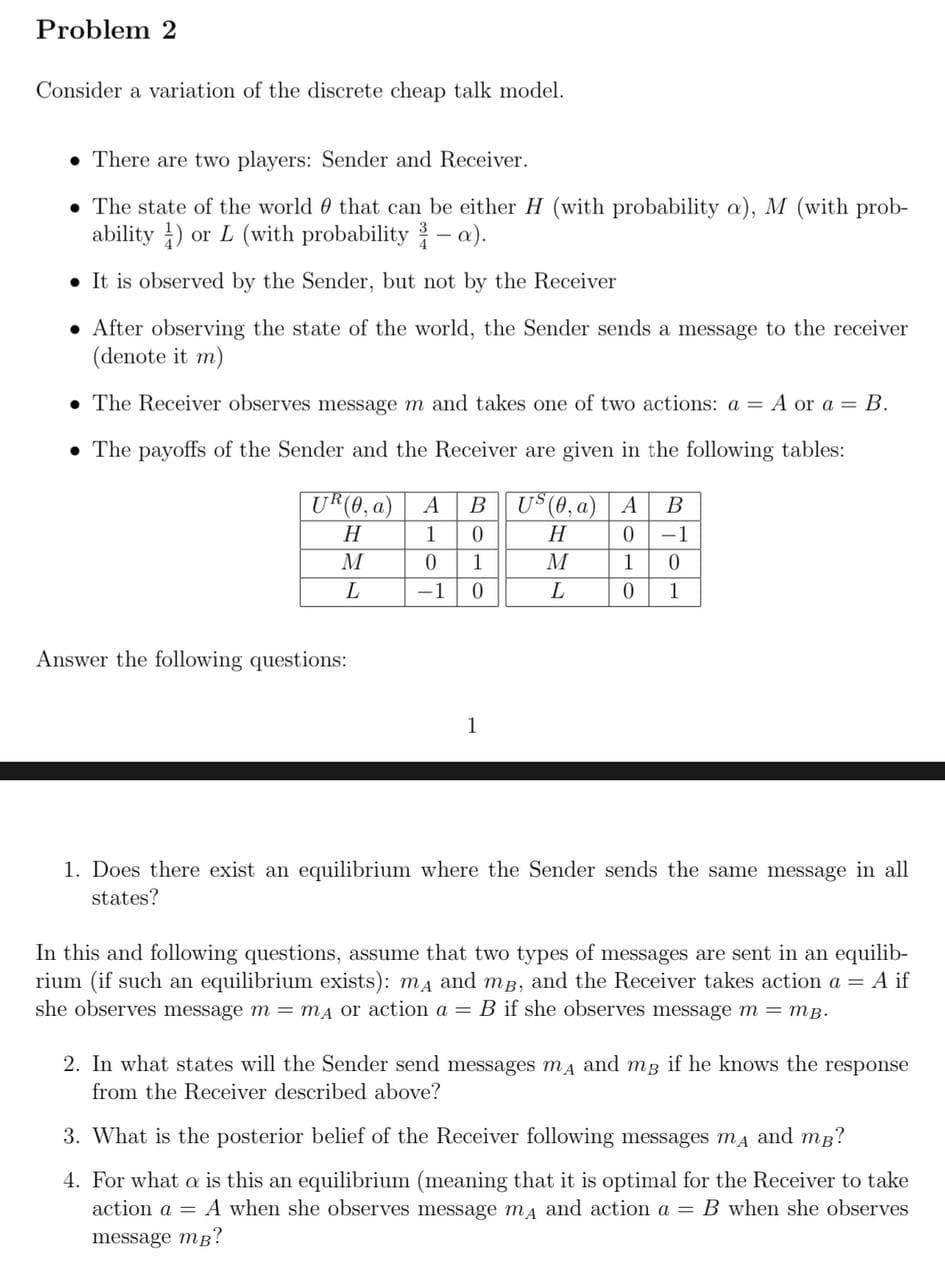
Problem 2 Consider a variation of the discrete cheap talk model. There are two players: Sender and Receiver. The state of the world 0 that can be either H (with probability a), M (with prob- ability ) or L (with probability - a). It is observed by the Sender, but not by the Receiver After observing the state of the world, the Sender sends a message to the receiver (denote it m) The Receiver observes message m and takes one of two actions: a = A or a = B. The payoffs of the Sender and the Receiver are given in the following tables: U$(0,a) B UR(0,a) H M M L 1 0 B 0 1 0 H M L 0 1 0 -1 0 -1 1 Answer the following questions: 1 1. Does there exist an equilibrium where the Sender sends the same message in all states? In this and following questions, assume that two types of messages are sent in an equilib- rium (if such an equilibrium exists): mA and mb, and the Receiver takes action a = A if she observes message m = ma or action a = B if she observes message m = m. 2. In what states will the Sender send messages mA and mg if he knows the response from the Receiver described above? 3. What is the posterior belief of the Receiver following messages ma and mo? 4. For what a is this an equilibrium (meaning that it is optimal for the Receiver to take action a = A when she observes message ma and action a = B when she observes message me? Problem 2 Consider a variation of the discrete cheap talk model. There are two players: Sender and Receiver. The state of the world 0 that can be either H (with probability a), M (with prob- ability ) or L (with probability - a). It is observed by the Sender, but not by the Receiver After observing the state of the world, the Sender sends a message to the receiver (denote it m) The Receiver observes message m and takes one of two actions: a = A or a = B. The payoffs of the Sender and the Receiver are given in the following tables: U$(0,a) B UR(0,a) H M M L 1 0 B 0 1 0 H M L 0 1 0 -1 0 -1 1 Answer the following questions: 1 1. Does there exist an equilibrium where the Sender sends the same message in all states? In this and following questions, assume that two types of messages are sent in an equilib- rium (if such an equilibrium exists): mA and mb, and the Receiver takes action a = A if she observes message m = ma or action a = B if she observes message m = m. 2. In what states will the Sender send messages mA and mg if he knows the response from the Receiver described above? 3. What is the posterior belief of the Receiver following messages ma and mo? 4. For what a is this an equilibrium (meaning that it is optimal for the Receiver to take action a = A when she observes message ma and action a = B when she observes message me







